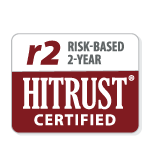Published on .
2024 is slated to be a big year for Medicare Advantage plans, with some major changes to the Star Ratings program going into effect in just a few months’ time. CMS has announced a series of new items to think about, including adjustments to the QI Hold Harmless provision, alterations to key measures around discharges and readmissions, and a wholly revamped medication therapy management (MTM) initiative.
And that’s not all. Health equity is also at the top of the agenda for 2024 with the introduction of the Health Equity Index (HEI), designed to motivate MA plans to close health equity gaps and ensure better health outcomes and experiences for all members.
The HEI will replace the existing reward factor for earning Quality Bonus Payment (QBP) incentives, meaning MA plans will need to focus their attention on identifying populations with social risk factors (SRFs) and deploying highly effective interventions for eliminating socioeconomic barriers to care. The HEI score will measure performance years 2024 and 2025, leading to the first reward in 2027.
That doesn’t give plans much time to prepare, but it’s NOT too late to make a difference in your 2023 Star Rating performance year. A mid-year surge can bring tangible success—if it’s tied to the most important fulcrum for achieving health equity and earning higher Star Ratings: medication adherence.
Why does the HEI matter so much for MA plans?
The HEI represents a new way of looking at how plans provide equitable, culturally aware care to people across the socioeconomic spectrum. Initially, plans will be scrutinized on how they provide care for MA Part C and Part D members with known proxies for socioeconomic vulnerability, including those with low-income subsidies (LIS), dual eligibility and disabled status.
Performance buckets will be divided into thirds, with plans in the top third on a given measure awarded one point (included measures are due to be announced annually). Plans in the middle third will get zero points, while those in the bottom bracket will get negative-one point. CMS will then aggregate the scores across included measures to create a weighted overall score, which will be applied to the Star Ratings calculations. Plans must have a total score greater than zero to qualify for any quality bonus payment (QBP) reward.
![]()
| % of enrollees in a contract with the specified SRFs < 0.5 of the median for all contracts. | Zero Reward. |
| % of enrollees in a contract with the specified SRFs ≥ 0.5 of the median for all contracts and < the median for all contracts. | HEI reward will vary from 0 to 0.2 on a linear scale for contracts that have an HEI score > 0. |
| % of enrollees in a contract with the specified SRFs ≥ the median for all contracts. | HEI reward will vary from 0 to 0.4 on a linear scale for contracts that have an HEI score > 0. |
| Source: 2023-07115.pdf (federalregister.gov) | |
That means scoring well on the HEI is crucial for staying competitive in the MA market and kickstarting a cycle of success. In addition to unlocking lucrative QBP opportunities, plans that lean into the principles behind the HEI may be more likely to see improvements in complementary areas, as well, that could lead to reaching or surpassing the all-important 4.0-Star performance threshold.
The 4.0-Star designation is where plans can truly start to accelerate their growth in the market. Plans that improve from 3.0 Stars to 4.0 Stars can expect to increase plan revenues between 13.4–17.6 percent through QBP incentives and increased enrollment revenue (a one-star bump is correlated with an 8–12 percent increase in enrollment).
And it all starts with medication adherence, which directly impacts some of the most heavily weighted Stars measures, including triple-weighted metrics for adherence to therapies for hypertension, high cholesterol and diabetes, as well as overall metrics for chronic disease management and drug plan quality improvement. Adherence factors also feature prominently in the CAHPS patient experience survey, which comprises 33 percent of a plan’s overall score.
Zeroing in on the intersection between health equity and medication adherence can give MA plans their best chance at maximizing performance on the HEI, accruing the benefits of delivering more socioeconomically responsive care, and potentially improving their Star Ratings.
The mid-year surge for medication adherence
Six months of the year may be gone, but it’s certainly not too late to make real progress in medication adherence for higher-risk members. A mid-year–focused adherence surge can get plans on track to meet medication adherence targets in the current performance year, while addressing health disparities that may lead to higher scores on the HEI in the following year.
To get started, plans will need the right technologies and person-centered strategies to stratify members by risk category (i.e., dual eligible / LIS / disabled) and conduct meaningful, high-impact, SDOH-focused outreach activities at scale.
A mid-year surge includes identifying higher-risk individuals who were nonadherent for the first half of 2023 and connecting with these members to understand their barriers and provide socioeconomically sensitive solutions. These solutions should proactively identify and address transportation, food insecurity, pharmacy access and housing barriers, to ensure root-cause issues preventing longitudinal adherence are resolved.
The mid-year mark is a perfect point to put time and resources into developing these capabilities. Getting members on the right path to success right now can lead to more comprehensive adherence and improved Star Ratings during the current performance year. Also, once the calendar flips over to 2024, a 2023 midyear adherence approach gives plans a head-start on their future HEI performance.
Want to learn more about how real health plans have succeeded with their midyear adherence surge plans and how your plan can do so, too? Join AdhereHealth experts on June 14, 2023, at 2:00 PM EST / 11:00 AM PST, for our latest webinar, Achieve 4+ Stars and Prepare for the 2024 HEI with a Midyear Adherence Program: The Clock is Ticking.

